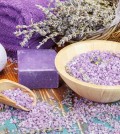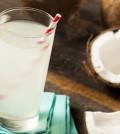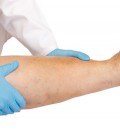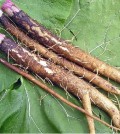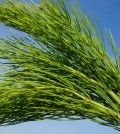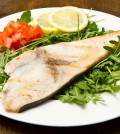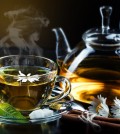- Make It Yourself Lavender Heart-Shaped Bath Bombs!
- 20 Things You Never Knew About “Down There”
- 12 Best Foods For Those Suffering From Arthritis Pain
- 12 Personal Hygiene Mistakes Almost Everyone Makes (Mom Never Told You About #4!)
- 15 Medicinal Plants And Herbs From The Cherokee People
- 12 Mind-Blowing Benefits Of Drinking Coconut Water During Pregnancy
- 12 Outstanding Winter Foods That Won’t Fatten You Up Like A Christmas Turkey
Moisturizing Your Skin Naturally
Moisturizing your skin is one of the most important things to do for the health of your skin – even if you don’t do anything else, moisturizer is almost always a must. Even those with naturally oily or normal skin have need for moisturizer, especially during months of cold or windy weather. It is very much possible to moisturize your skin from the inside with proper nutrition, but you should also take care to keep the outside layers of your skin balanced.
Moisturizer doesn’t have to be expensive though – or even from the beauty store! In fact, nature’s best moisturizers can be found right in your kitchen and most of them are quite inexpensive and used by most people (which means they are readily available). Check out these natural moisturizers that will keep your skin glowing and dewy throughout the cold months and even through hot summer days.
Honey
Honey that is raw and organic is naturally antibacterial and a great source of antioxidants. Not only is this great for your skin, but it also helps to moisturize, unclog pores and is an effective acne treatment. Using honey as a face mask treatment is the most effective, as you can use a more potent amount and get results faster. Although there are plenty of moisturizers on the market, even natural ones, that use honey the best way is to find a local honey producer that will give you raw honey, or purchase it at a natural grocery chain.
Buttermilk
The high content of lactic acid in buttermilk makes it a great option for use as a moisturizer. Lactic acid is used in many expensive face creams because it is very effective at removing skin cells and speeding up cell rejuvenation. The new cells not only make your skin look more youthful but they also absorb lots of the nutrients found in buttermilk which helps to keep them moisturized and plump. Simply soaking a face cloth in buttermilk and placing it on your face for five to ten minutes will help you get a more moisturized look to your face.
Olive Oil
Olive oil has been used for many centuries as an effective moisturizer. The antioxidants in the oil help to protect the skin from the sun and also the oil creates a barrier on the skin keeping it protected from the elements. Olive oil can be used as a facial moisturizer by itself or combined with other ingredients, such as coconut oil or shea butter, to help create a truly effective moisturizer. Olive oil can also be combined with essential oils in a bath to moisturize the entire body. Make sure to use real, extra-virgin, olive oil for maximum benefits.
Coconut Oil
The lauric acid in coconut oil is naturally supporting to collagen, the component of the skin that keeps it youthful, plump and able to hold moisture well. Coconut oil is also antibacterial and anti-microbial which means that it will help your skin resist anti-aging effects. The best kind of coconut oil to use is raw, unrefined, virgin coconut oil – rubbing a bit between your hands will help liquefy it and absorb quickly into the skin without leaving a greasy feeling behind.
Avocadoes
The high amount of fats in avocadoes means that every layer of your skin benefits when applied to the surface. Avocado also contains vitamins A, D, and E which all help to keep the skin moisturized and combating the effects of anti-aging. You don’t even have to use a whole avocado on your face. Eat the avocado itself and then rub the inside of the peel on your face to get the benefits of the avocado. Let the residue sit for a while, then wash off with warm water.
Cucumbers
This vegetable is known for its high water content, but did you know that you can transfer that to your skin? Because of how much water a cucumber holds, applying it to your face will help to reduce wrinkles and puffiness around the eyes in general. Packed with nutrients such as magnesium, potassium, Vitamins A and E, the cucumber is not just a spa gimmick but these nutrients help to promote blood circulation and healing which are important factors for healthy skin.
Aloe
Aloe is another natural plant that is high in Vitamins A and E, which help to keep the skin moisturized and healthy. The aloe plant’s gel is also effective at reliving itchiness which can be a side-effect of dry skin and also prevents flaking associated with dry skin. The best aloe gel to use is fresh, take directly from a leaf. Aloe plants are relatively easy to grown and care for and having one on hand is always beneficial. Simply cut open a leaf horizontally and scoop the gel into a bowl from where you can use it as a daily moisturizer or create a face mask with it.
Bananas
Bananas might not seem like and exotic or special fruit, but they are packed with nutrients and vitamins to help your skin. Potassium helps to hydrate skin, B Vitamins protect against free-radical damage, Vitamin A helps to heal dry skin, Vitamin C helps produce collagen, amino acids nourish the skin and Vitamin E helps protect against UV damage. Using an overripe banana as a face mask on a regular basis will greatly improve the quality of your skin and help it look youthful and moisturized.
Conclusion
Moisturizing your skin shouldn’t be hard or expensive. In fact, it can be as easy as turning to your kitchen for a few essentials that will keep your skin happy and glowing through any season or weather. Whichever ingredient from above you decide to use, depending on your needs and lifestyle preferences, all of them will boost your skin and keep it healthy. Some of the ingredients above can be used on a daily basis, such as coconut oil and olive oil, and others are better used as weekly or regular face masks to give your skin a much needed boost. All of them are natural and inexpensive and great alternatives to expensive moisturizers that can also include harmful chemicals.

